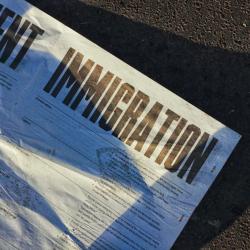Navigating Copyright Infringement: Essential Insights & Action Steps
Are you a creator who cherishes the art and work you pour your heart into?
Are you also aware of the lurking threat of unauthorized use and copyright infringement that can potentially strip you of the recognition and rewards you deserve?
In a world where digital content is easily accessible and easily shared, understanding the ins and outs of copyright infringement is crucial.
But fear not, for this article will provide you with the essential insights and action steps you need to navigate this complex landscape.
From deciphering what constitutes copyright infringement to seeking legal remedies and understanding the power of a letter of demand, we will equip you with the knowledge and tools necessary to protect your creative work.
So, buckle up and get ready to embark on a journey of safeguarding your artistic endeavors.
Key Takeaways
- Copyright infringement can occur even if only a small portion of a copyrighted work is used.
- It is important to seek legal advice before making claims of copyright infringement.
- Not every use of a copyrighted work without consent is considered infringement.
- Legal advice for copyright infringements should be sought before sending a letter of demand.
Understanding Copyright Infringement
When trying to understand copyright infringement, it's crucial to grasp the concept of using a substantial part of a copyrighted work without obtaining permission. Copyright infringement occurs when someone uses a significant portion of a copyrighted work without the owner's consent.
It's important to note that the definition of 'substantial part' is qualitative rather than quantitative. In other words, even if only a small portion of the work is used, it can still be considered copyright infringement.
To determine whether a use qualifies as infringement, it's advisable to seek legal advice. Time limits also exist for initiating legal proceedings for copyright infringement, so prompt action is necessary.
Understanding these aspects of copyright infringement is essential for protecting your intellectual property rights.
Defenses Against Copyright Infringement
To mount a successful defense against copyright infringement, it's crucial to understand the various legal strategies and arguments that can be employed. Here are three key defenses that can be used to protect yourself against allegations of copyright infringement:
- Fair Use: This defense allows for the limited use of copyrighted material without permission, particularly for purposes such as criticism, commentary, news reporting, teaching, or research. It's important to carefully evaluate whether your use falls within the boundaries of fair use.
- Lack of Originality: A work must be original to be protected by copyright. If the allegedly infringed work lacks originality or is merely a common idea or concept, it may not be eligible for copyright protection, making a defense against infringement viable.
- Public Domain: Works that are in the public domain aren't protected by copyright and can be freely used by anyone. If the allegedly infringed work is in the public domain, it can serve as a strong defense against copyright infringement claims.
The Importance of a Letter of Demand
Sending a letter of demand is a crucial step in asserting your ownership rights and seeking a remedy for copyright infringement. This communication serves to inform the infringing party of their violation and allows you to explain the infringement and request a remedy.
It's important to note that the letter can be used as evidence in court proceedings. To ensure effectiveness, care should be taken not to make unsubstantiated threats of infringement. It's essential to prepare the letter with the intention of going to court if necessary, while avoiding any resemblance to a court document, as this is illegal.
Consider sending the letter by registered post or fax to provide proof of receipt. Remember to retain a copy of the letter for record-keeping purposes.
Seeking legal advice before sending the letter is highly recommended to ensure that all necessary elements are included and to increase the chances of a successful legal case.
Guidelines for Sending a Letter of Demand
Sending a letter of demand for copyright infringement requires careful consideration and adherence to specific guidelines. To ensure that your letter is effective and persuasive, follow these essential guidelines:
- Be clear and concise: Clearly state the copyright infringement and provide specific details about the copyrighted work that has been used without permission. Avoid using vague language or making unsubstantiated claims.
- Use a professional tone: Maintain a professional and respectful tone throughout the letter. Avoid using aggressive or threatening language that may undermine your position.
- Provide evidence: Include any evidence of the infringement, such as screenshots or links to the infringing material. This will help strengthen your case and demonstrate the validity of your claim.
Key Factors to Consider in Copyright Infringement Cases
When considering key factors in copyright infringement cases, it's important to thoroughly analyze the evidence of infringement and establish the validity of your claim.
First, you must determine if the alleged infringing party has used a substantial part of your copyrighted work without permission. Remember, the definition of 'substantial part' is qualitative, not quantitative, so even a small portion of your work may constitute infringement.
Additionally, you should consider any potential defenses that the infringing party might raise, such as fair dealing or limited statutory licenses. Seek legal advice to determine if these defenses apply.
Finally, gather and preserve all relevant evidence of infringement, including proof of ownership and documentation of the alleged infringing use.
Additional Resources and Services for Copyright Infringement Cases
To assist individuals and businesses dealing with copyright infringement cases, there are a variety of resources and services available to provide guidance and support throughout the legal process. These resources and services can help you navigate the complexities of copyright law, protect your intellectual property rights, and seek appropriate remedies for infringement.
Here are three valuable options to consider:
- Legal Assistance: Hiring an experienced copyright attorney can ensure that you have expert advice and representation throughout your case. They can help you understand your rights, assess the strength of your claim, and guide you through the legal proceedings.
- Copyright Infringement Investigation Services: Professional investigation services can help gather evidence of infringement, identify the infringing party, and provide you with a comprehensive report to support your case. These services can be instrumental in building a strong legal argument.
- Mediation and Alternative Dispute Resolution: If you prefer to resolve the dispute outside of court, mediation and other alternative dispute resolution methods can be explored. These processes aim to facilitate negotiations and reach a mutually acceptable agreement between the parties involved.
Conclusion
In conclusion, understanding copyright infringement and taking action to protect your creative work is essential in today's digital age.
By familiarizing yourself with the definition of copyright infringement, the concept of fair dealing, and the potential consequences of unauthorized use, you can assert your rights effectively.
Seeking legal advice and utilizing a letter of demand when necessary can be powerful tools in asserting your ownership rights.
By taking these steps, you can navigate the complexities of copyright infringement and safeguard your creative work.
More to Read:
Previous Posts:
Next Posts:



